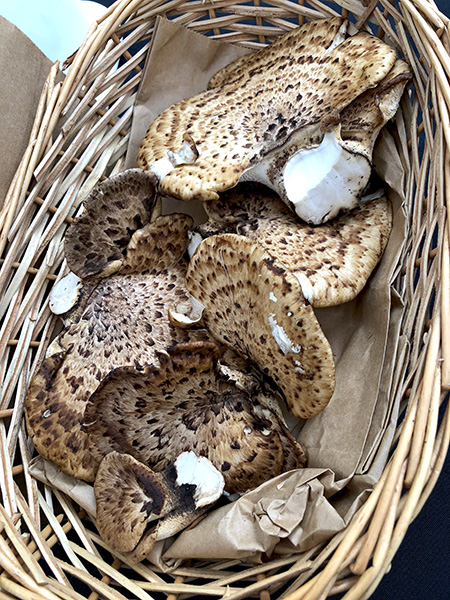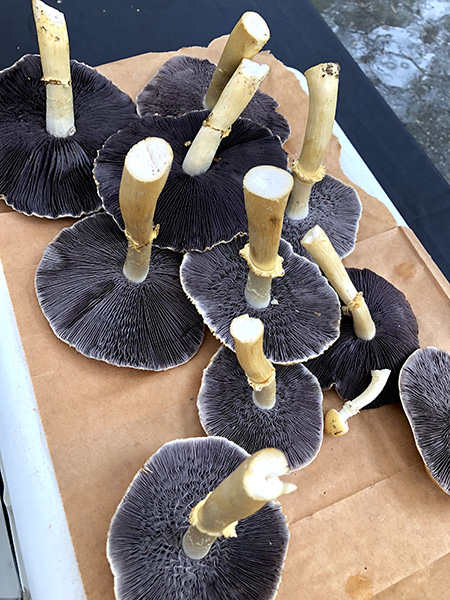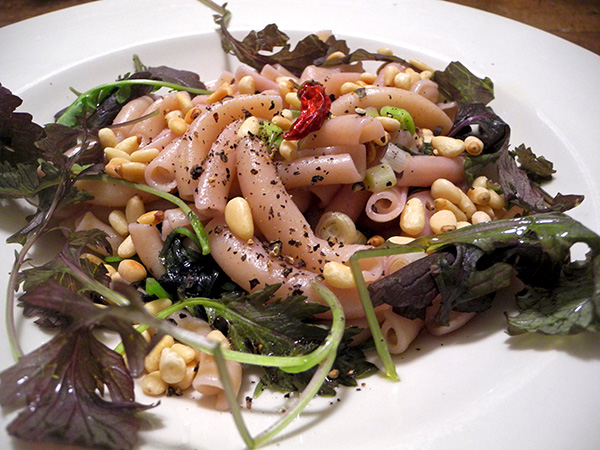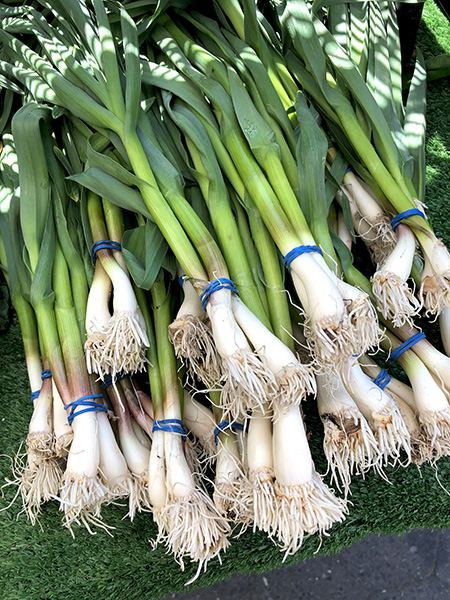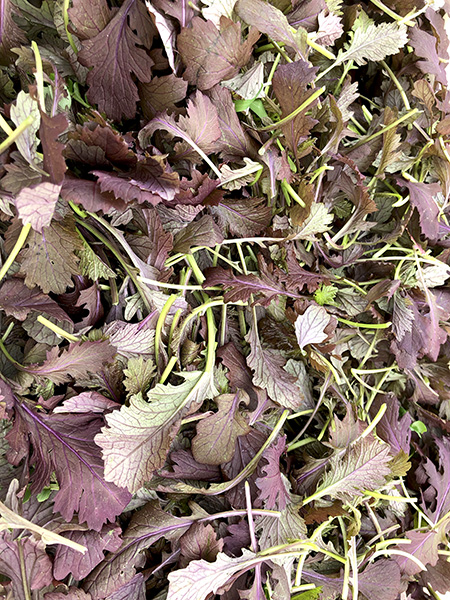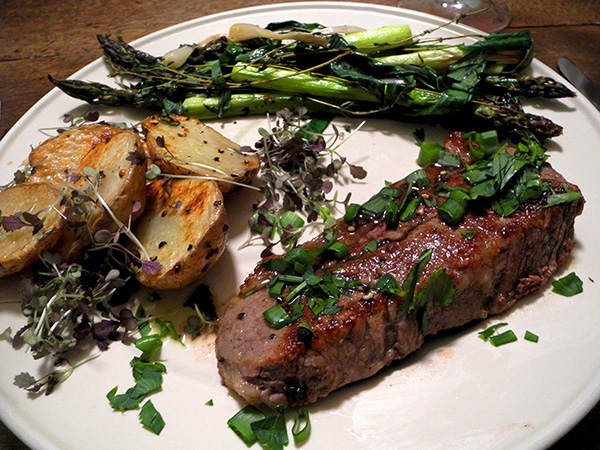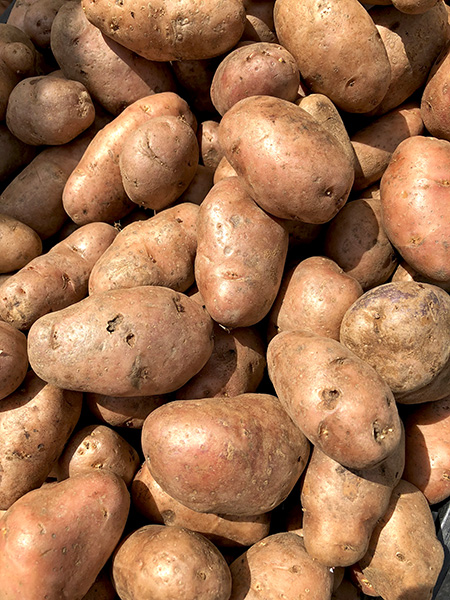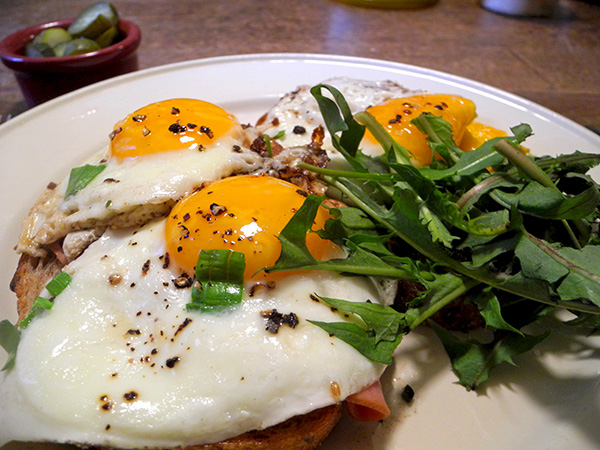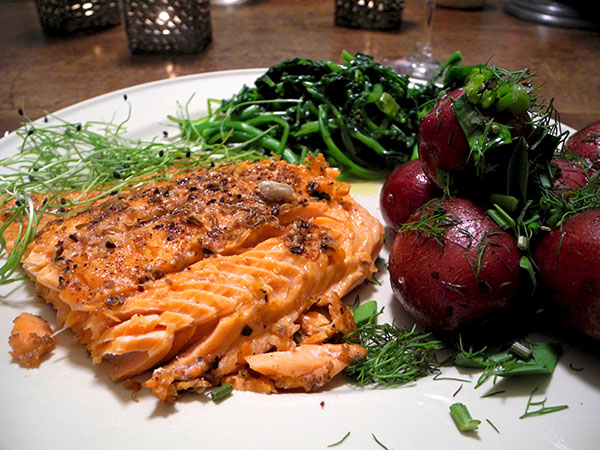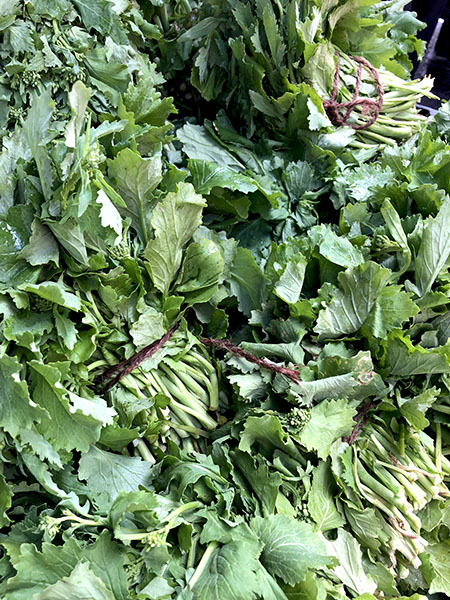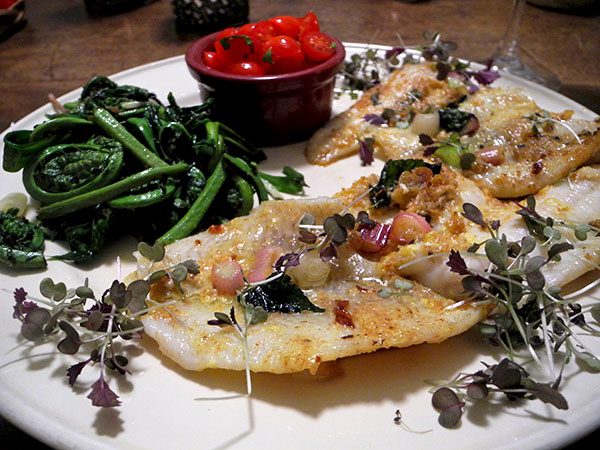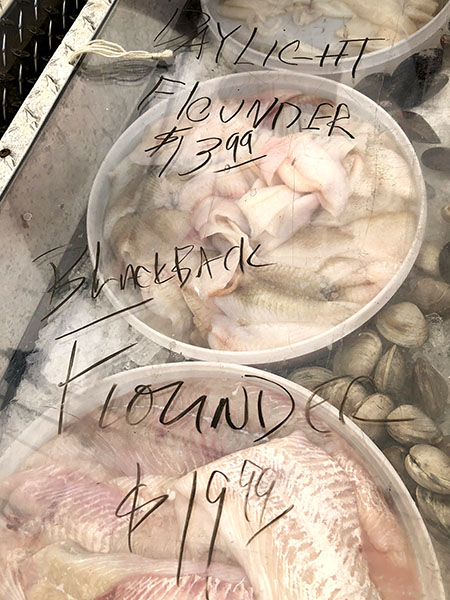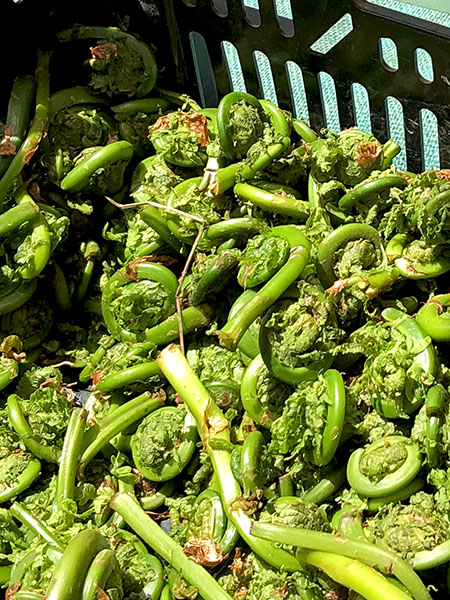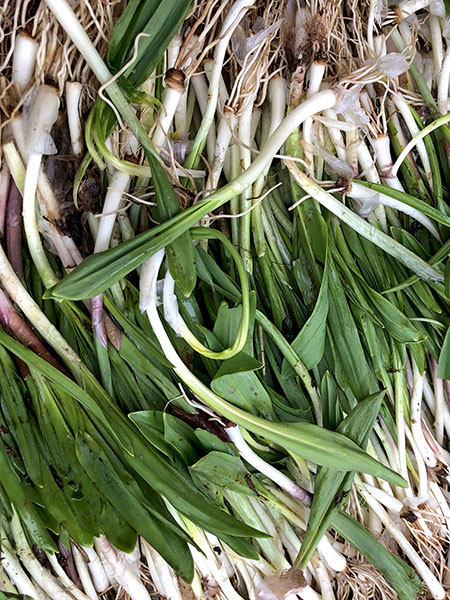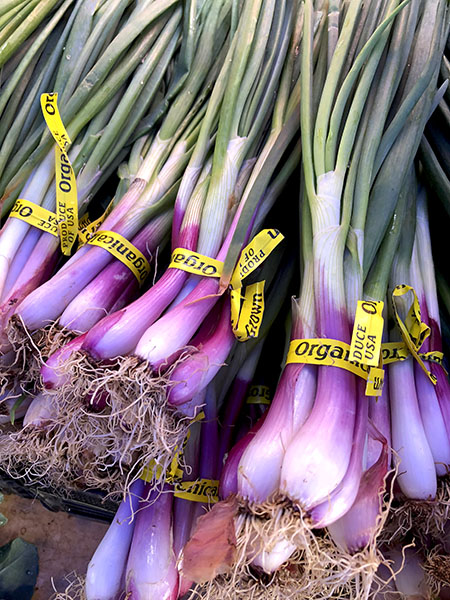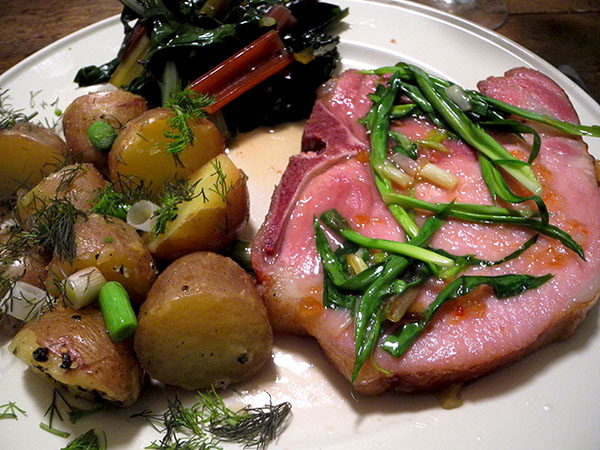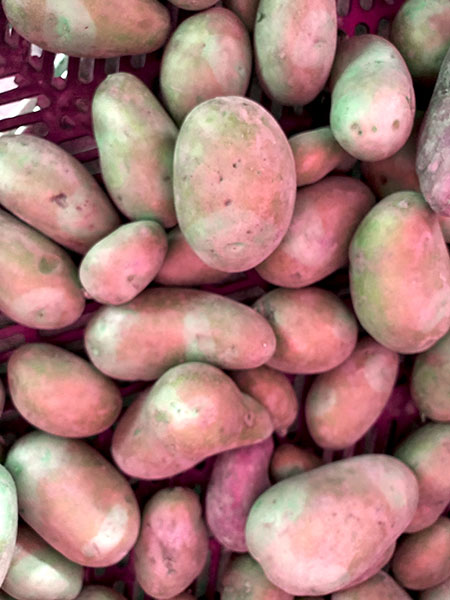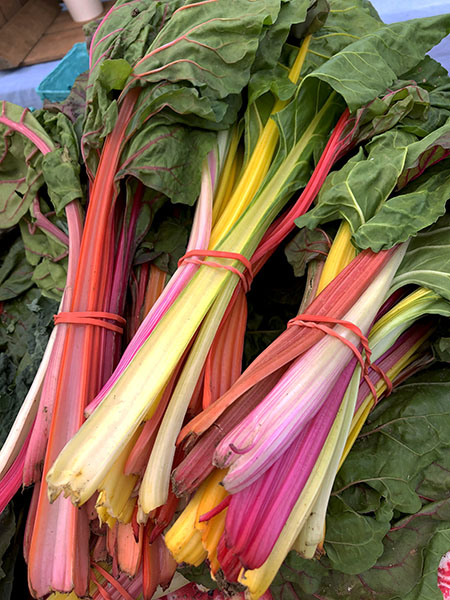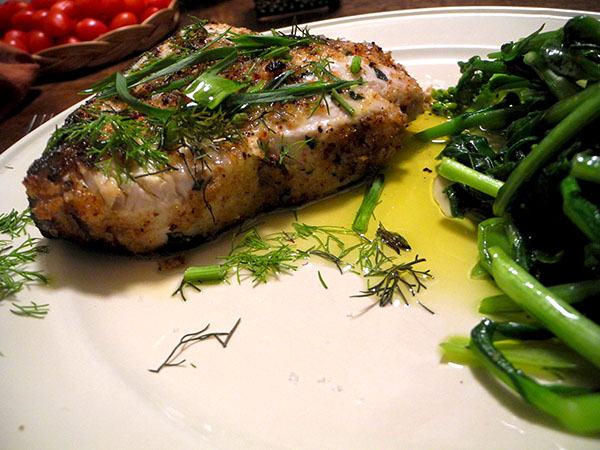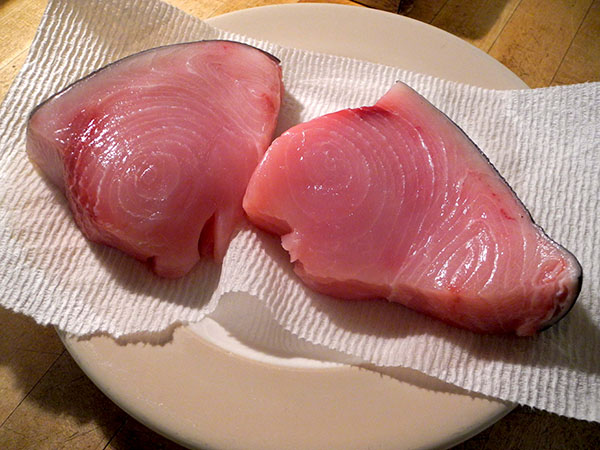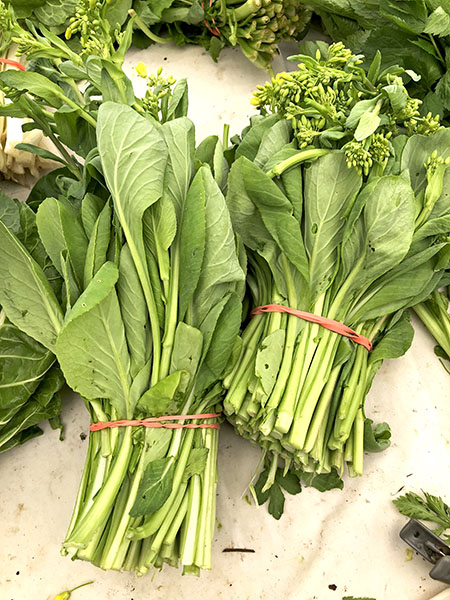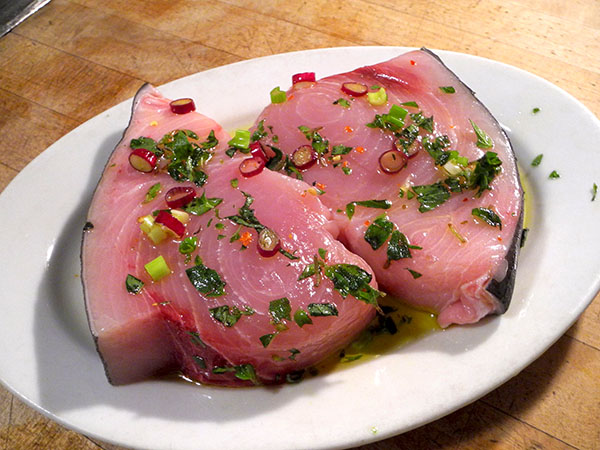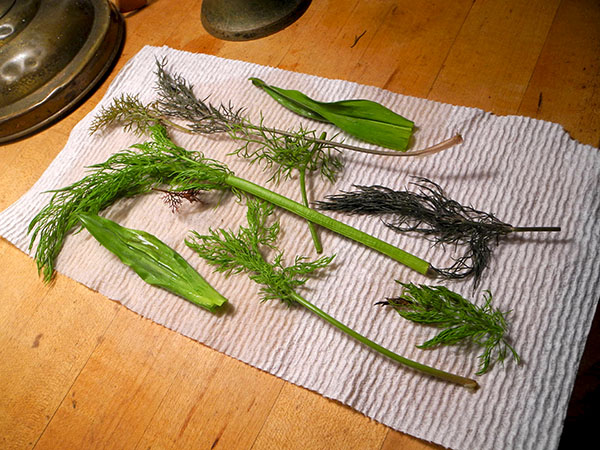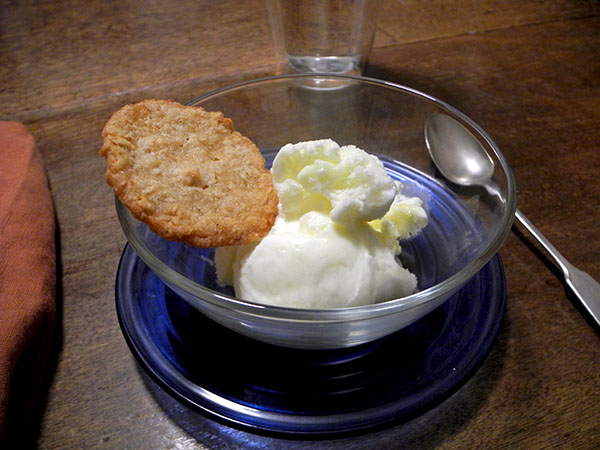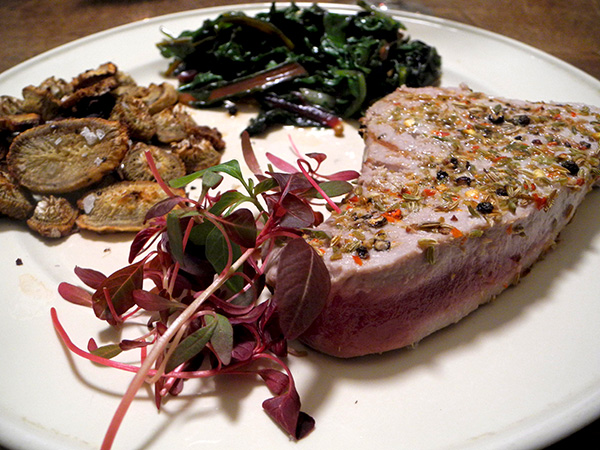
I’d never cooked with burdock before, and I’m not certain I did the right thing with it last night, but it was interesting. The ‘chips’ proved to be a little more difficult to get right than all the other roots I’ve prepared this way. I’m just going to have to do more research before I try out this operation again.
The image of freshly-cut burdock root seen below seems to suggest that Willow Wisp Farm, while it’s located (just inside) northeastern Pennsylvania, may be a part of the ‘Black Dirt Region’ conventionally associated with New York’s Rockland County and New Jersey’s Sussex County. I’m going to try to remember to ask Greg Swartz, the farmer, next time I stop by his stand in the Greenmarket.
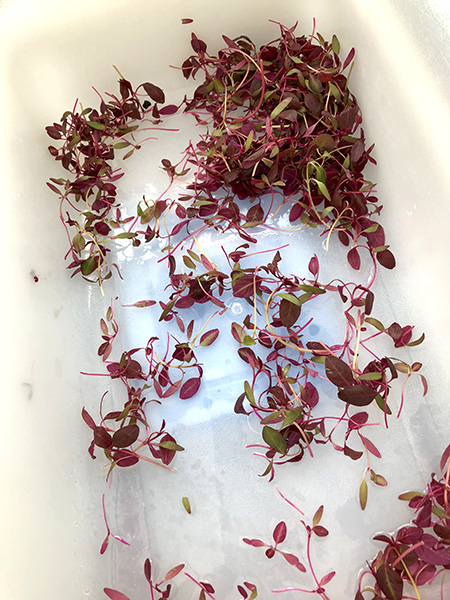
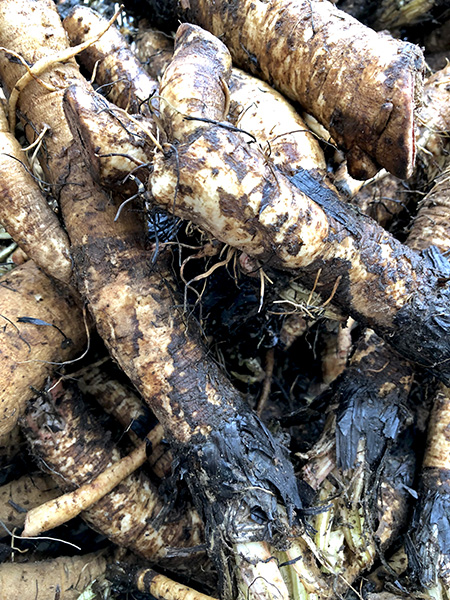
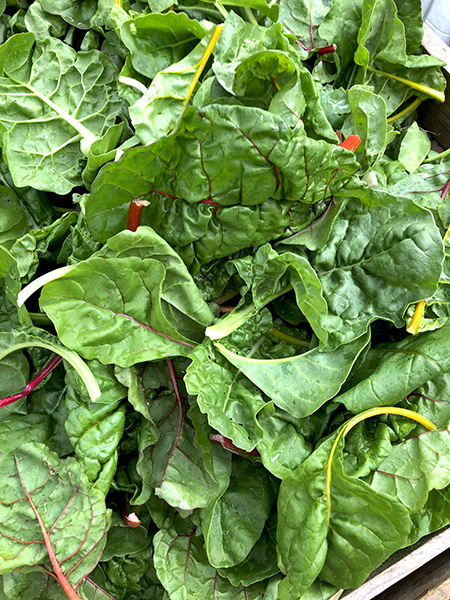
- one 14-ounce tuna steak from Pure Vida Seafood, rinsed, dried, cut into 2 pieces, the ‘tails’ the cut created pinned back onto the rest of the steak sections with toothpicks, seasoned on both sides with sea salt and freshly-ground black pepper, then rubbed, tops and bottoms, with a mixture of a tablespoon of a wonderful dry Sicilian fennel seed from Buon Italia that had been crushed in a mortar and pestle along with a little dried peperoncino Calabresi secchi from Buon Italia, pan-grilled above a medium-high flame (for only a little more than a minute or so on each side), finished on the plates with a good squeeze of the juice of an organic lemon from Whole Foods Market, finished with a bit of olive oil drizzled on top, some micro red amaranth from Windfall Farms arranged at one end
- two burdock roots from Willow Wisp Farm (20 ounces before trimming), scrubbed clean and surfaces scraped with a knife, their roots cut into thin rounds tossing them, as they accumulate, into a bowl of cold water in which some lemon juice had been squeezed (in order to keep the now-exposed surfaces of the roots from discoloring), drained when all had been cut, dried on a kitchen towel before being placed inside a dry bowl and tossed with a couple tablespoons of olive oil, sea salt, freshly-ground black pepper, and 2 small pieces of dried orange/golden habanada pepper, crushed finely, the chips arranged, separated from each other, inside 2 seasoned ceramic Pampered Chef pans and roasted at 450º for about half an hour, depending on their thickness, until they were at least a bit crunchy
- one tablespoon or more of olive oil was heated over medium heat inside a high-sided heavy antique copper pan, then one sliced stem of spring garlic from John D. Madura Farm added, along with 2 small dried peperoncino Calabresi secchi, and a quarter to a half teaspoon of whole coriander seeds, the small mix cooked for about 30 seconds to a minute, or until the garlic was both slightly softened and becoming fragrant, the heat turned down to low and 10 ounces of loose baby rainbow chard from Alewife Farm gradually added and stirred until wilted, seasoned with sea salt and freshly-chopped pepper, and arranged on the plates to be finished with a little olive oil
- the wine was a California (Lodi) rosé, Karen Birmingham Sangiovese Rosé Lodi 2017, from Naked Wines
- the music was the album, ‘Melomania – String Quartets By Women Composers’
